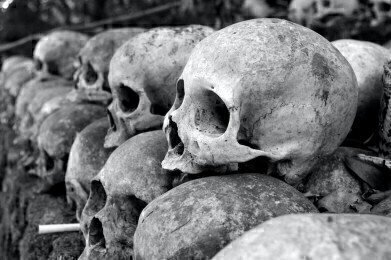Bioanalytical
Investigating the Stench of Death with Chromatography
May 13 2015
The rotting smell of a dead body isn’t one you’re likely to forget in a hurry. Uniquely distinctive, decaying bodies give off a pungent odour that is comprised of more than 400 volatile organic compounds. These compounds interact with each other in complex and changing ways, thus affecting the smell of a cadaver over time.
The highly sensitive technique of gas chromatography allows chemists to break down gases into their individual compound components, making them easier to identify. Since the concentration of certain compounds vary as decomposition progresses, identifying these compounds may allow forensic scientists to more accurately predict the time of death of deceased individuals.
A Highly Sensitive Mixture
The foul-smelling gases which are emitted by a dead body are directly affected by the compounds released as bacteria breaks down corporeal tissues into salts and vapours. Other factors which affect the composition of the gas – and therefore the smell of the body – include:
- The type of the bacteria present on the body after death
- How this bacteria interacts with each other
- The climate in which the body is decomposing
- The genetic makeup of the deceased
- The diet of the deceased, especially immediately prior to death
These last two factors in particular have a lesser effect on the gaseous composition, but each factor contributes in its own unique way.
Though these putrid gases repel most animals, they actually attract a certain type of insect which feeds upon rotting flesh. These insects (known as necrophagic insects) are drawn to the body at different stages in its decomposition due to the varying compounds which are released. By using the insects’ attraction, scientists hope to identify all of the various compounds which go into a corpse’s scent. So far, two of the major offenders which have been identified are putrescine and cadaverine.
Practical Applications
As well as aiding with predicting time of death, scientists are hopeful that gas chromatography can identify other compounds in order to achieve other practical applications. For example, if we know which compounds are responsible for the smell of death, we can theoretically develop ‘electronic noses’, devices which would be capable of sniffing out dead bodies.
This could be useful for searching for concealed bodies in murder cases or trapped corpses in the event of natural disasters such as earthquakes, tsunamis and monsoons. For more information on how chromatography is already being used in similar fields, see the article How is Chromatography Used in Forensics?
Meanwhile, the technology could be useful in other disciplines, as well. The ability to detect deathly compounds could offer great advantages in the food industry, by identifying which fish, meat and poultry products were dangerous to consume due to the length of time they had been deceased for.
Digital Edition
Chromatography Today - Buyers' Guide 2022
October 2023
In This Edition Modern & Practical Applications - Accelerating ADC Development with Mass Spectrometry - Implementing High-Resolution Ion Mobility into Peptide Mapping Workflows Chromatogr...
View all digital editions
Events
Apr 28 2024 Montreal, Quebec, Canada
May 05 2024 Seville, Spain
May 15 2024 Birmingham, UK
May 19 2024 Brno, Czech Republic
May 21 2024 Lagos, Nigeria














